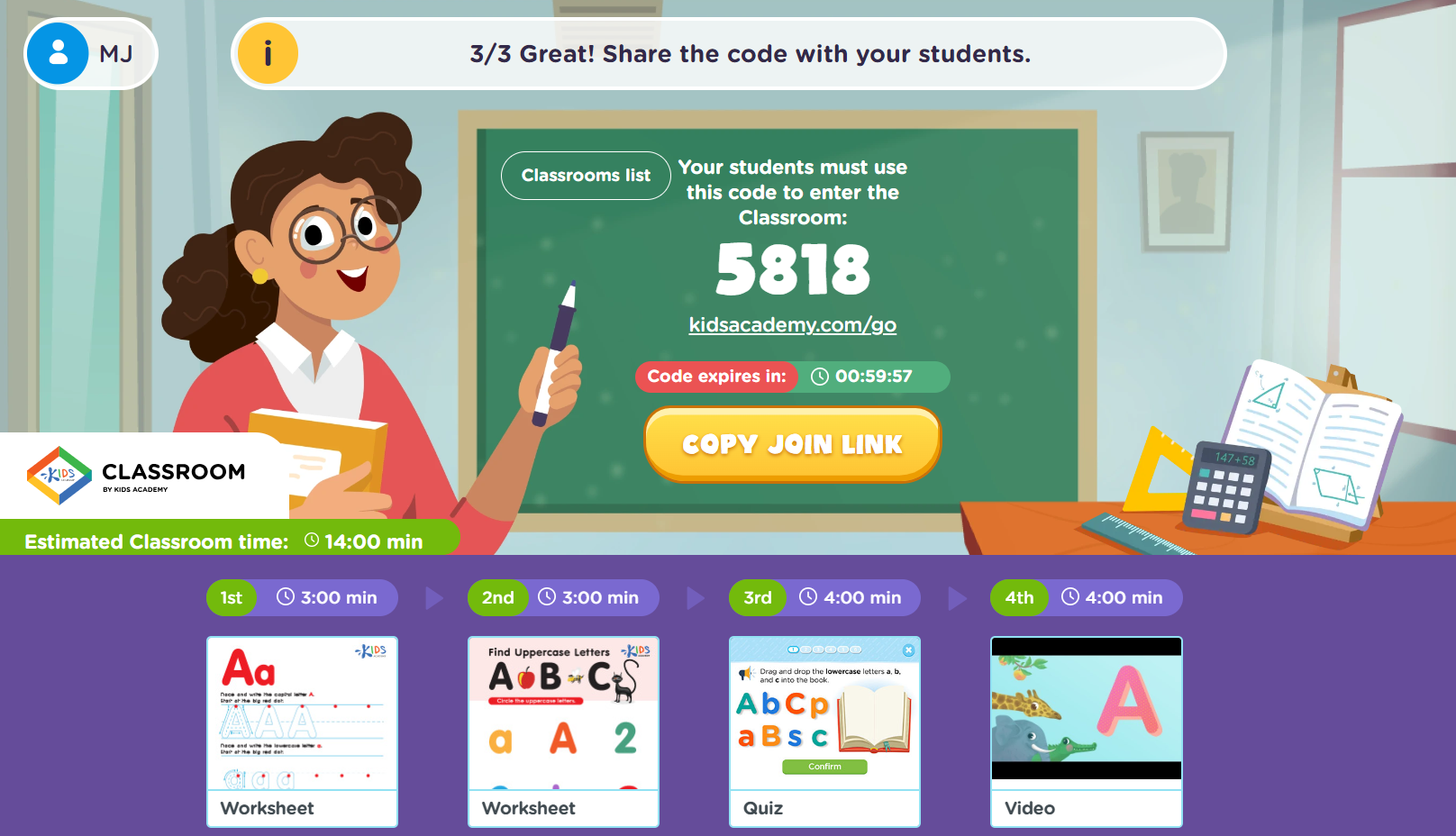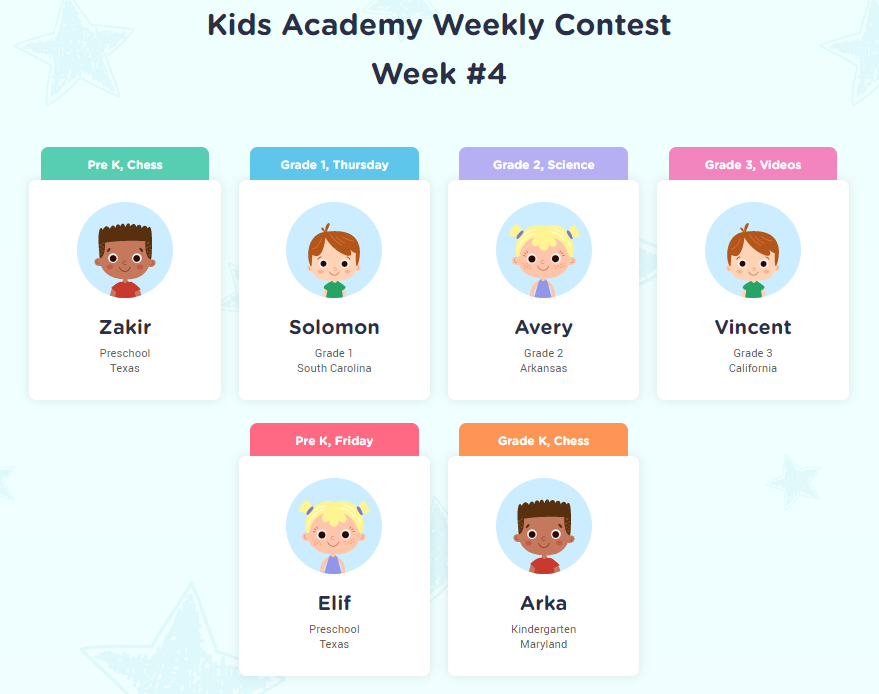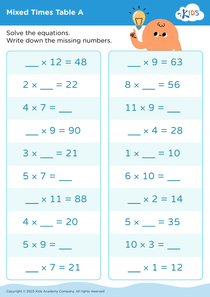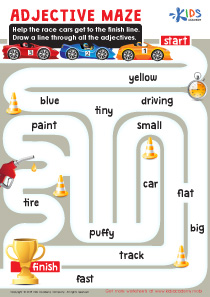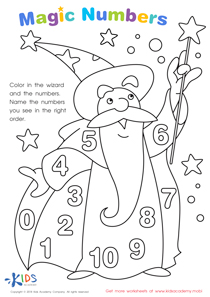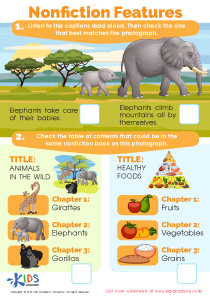Extra Challenge Chess Worksheets for Ages 3-7
37 filtered results
-
From - To
Discover "Extra Challenge Chess Worksheets for Ages 3-7," a fantastic resource designed to ignite young minds with strategic thinking and problem-solving skills! Tailored for early learners, these engaging worksheets provide fun activities that introduce basic chess concepts while enhancing critical cognitive abilities. Each worksheet promotes observation, strategy, and creativity, making learning interactive and enjoyable. Perfect for both classroom settings and home practice, these challenging materials will foster not only knowledge of chess, but also important life skills. Give your little ones the edge they need to think ahead and plan wisely, all while having a blast with the game of chess!
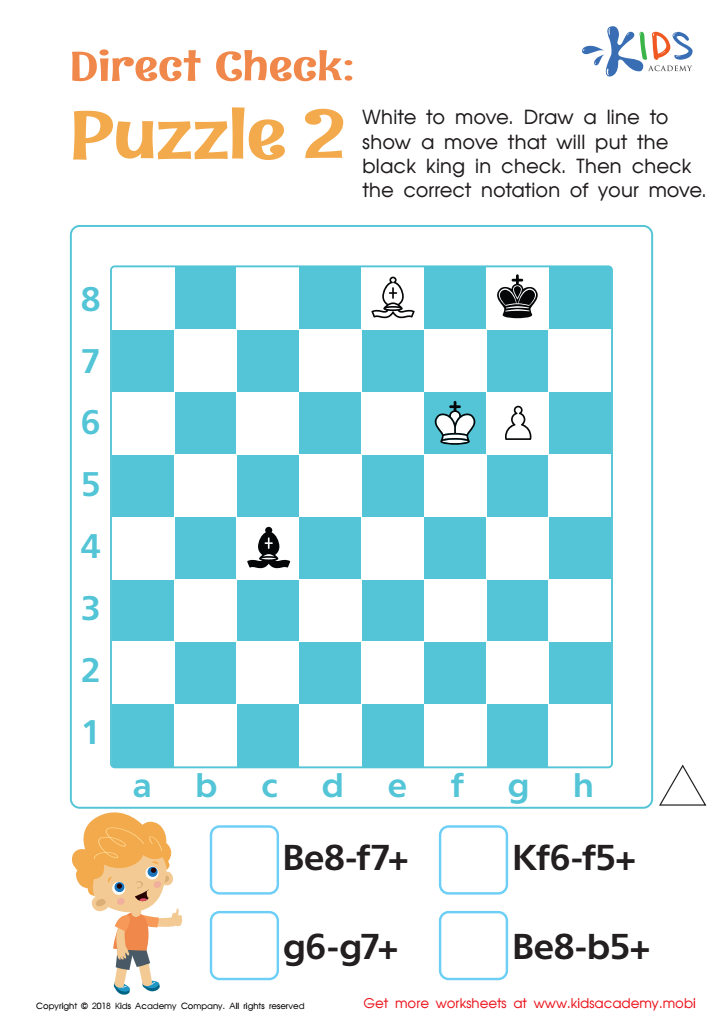

Direct Check: Puzzle 2 Worksheet
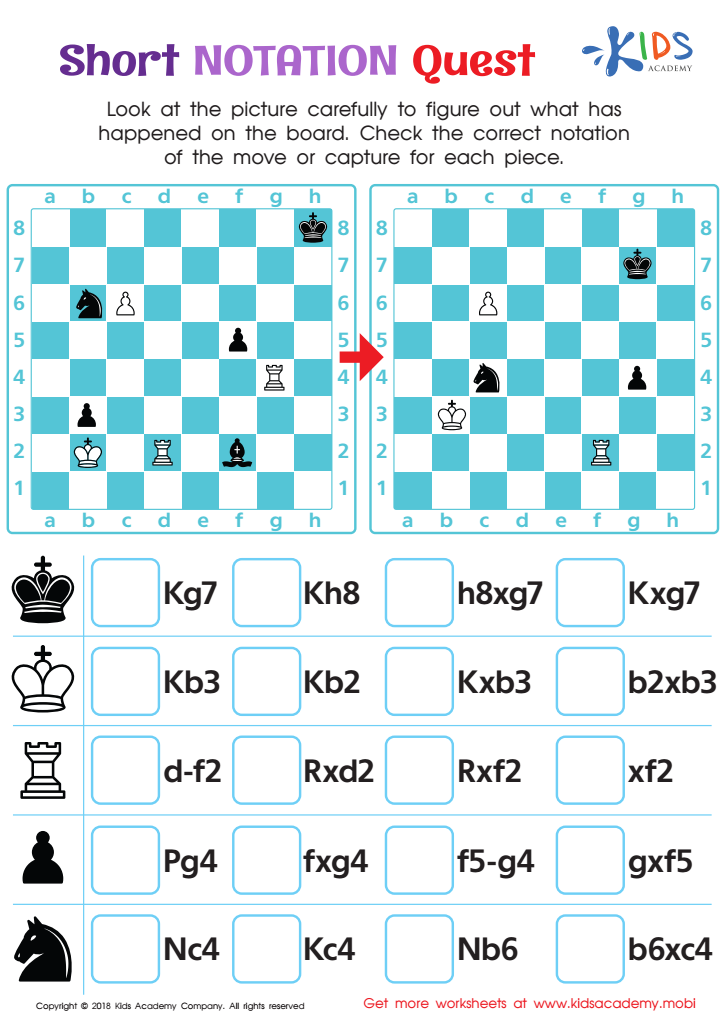

Short Notation Quest Worksheet
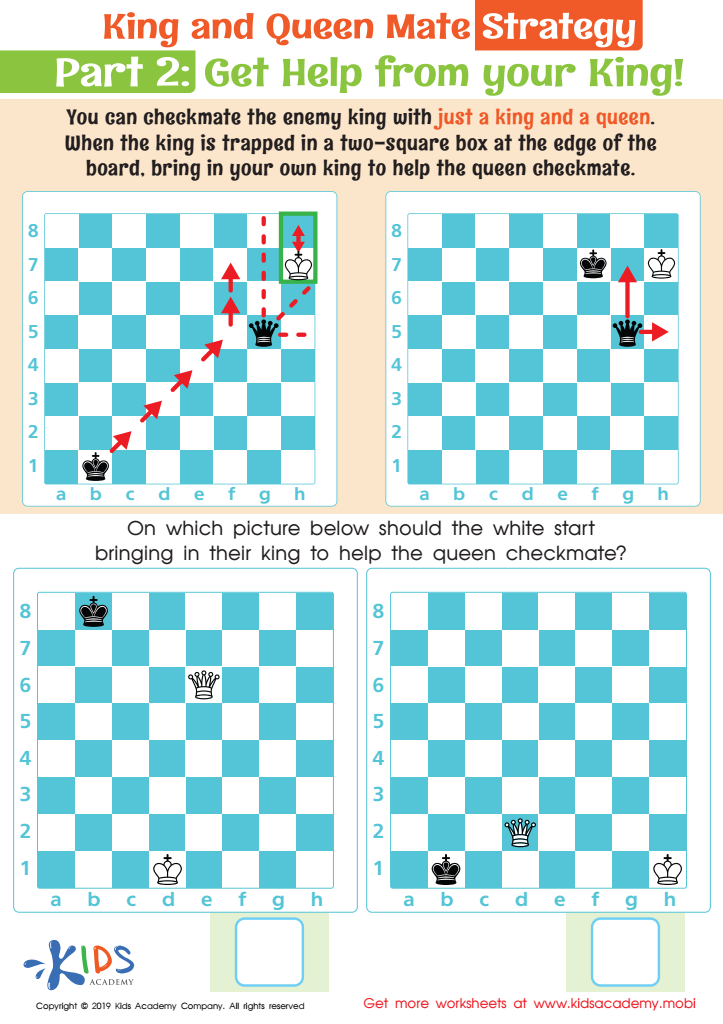

King and Queen Mate Strategy: Part 2 Worksheet
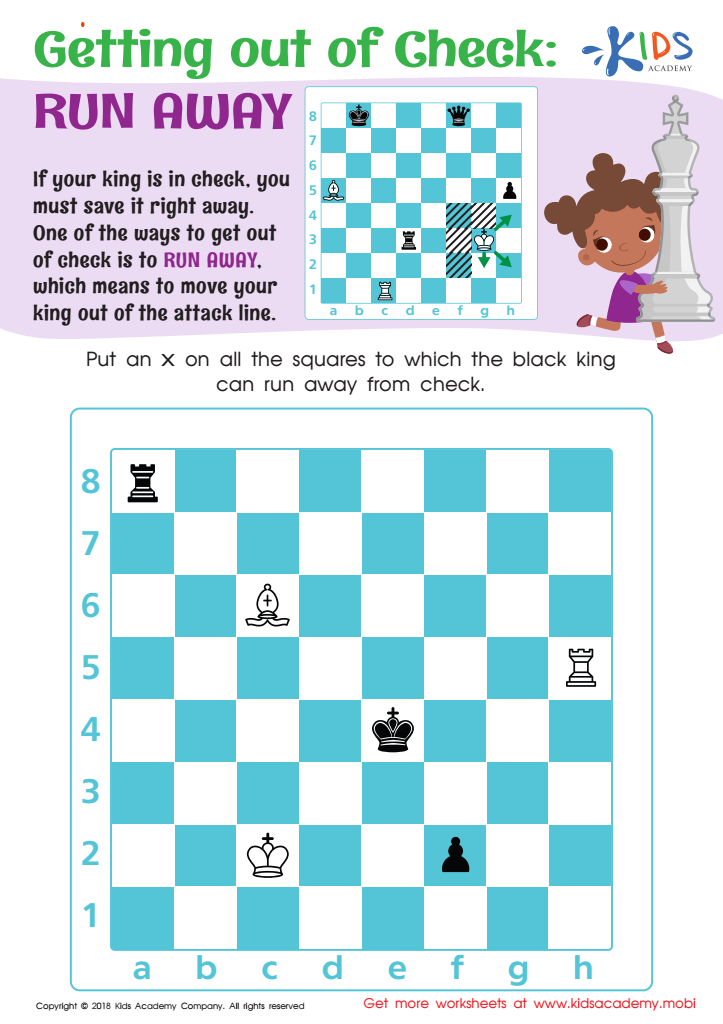

Getting out of Check: Run Away Worksheet
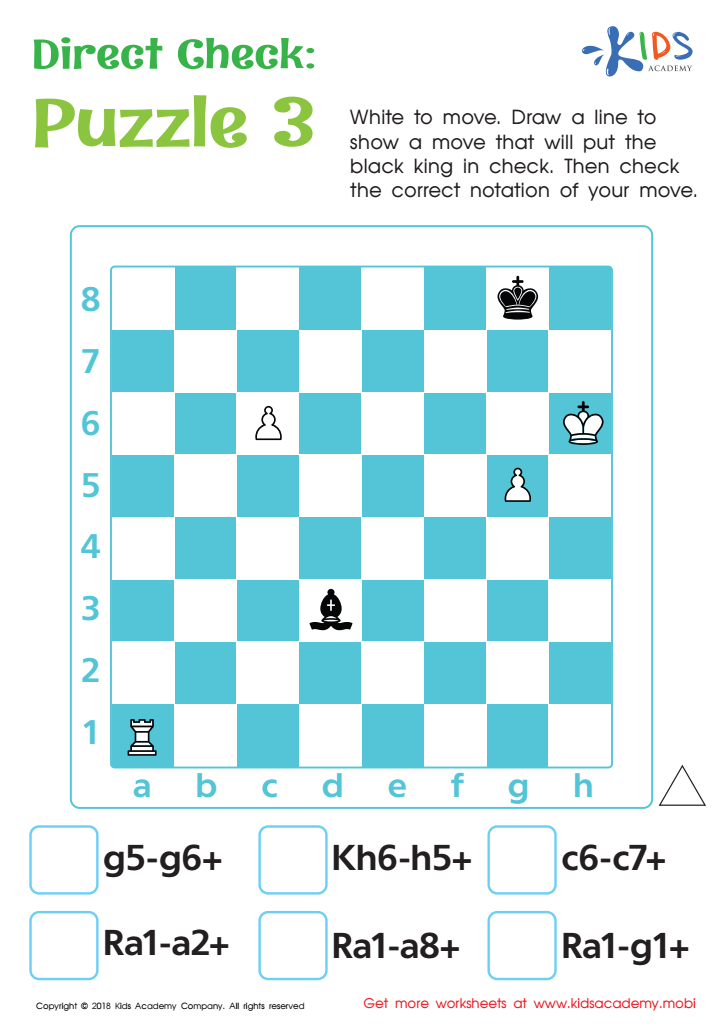

Direct Check: Puzzle 3 Worksheet
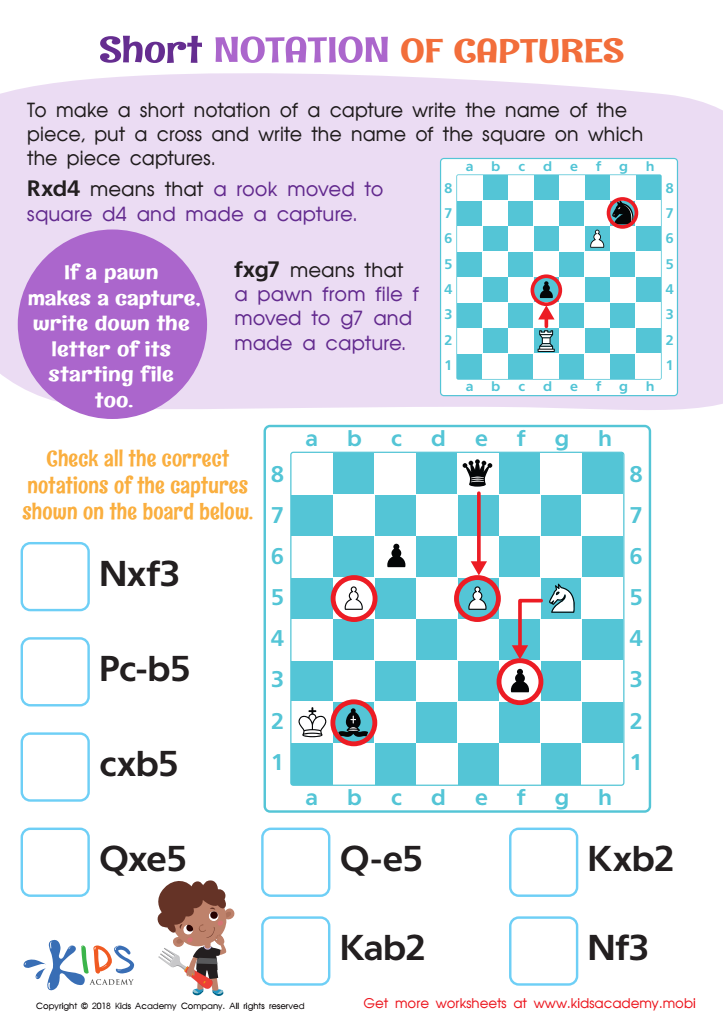

Short Notation of Captures Worksheet
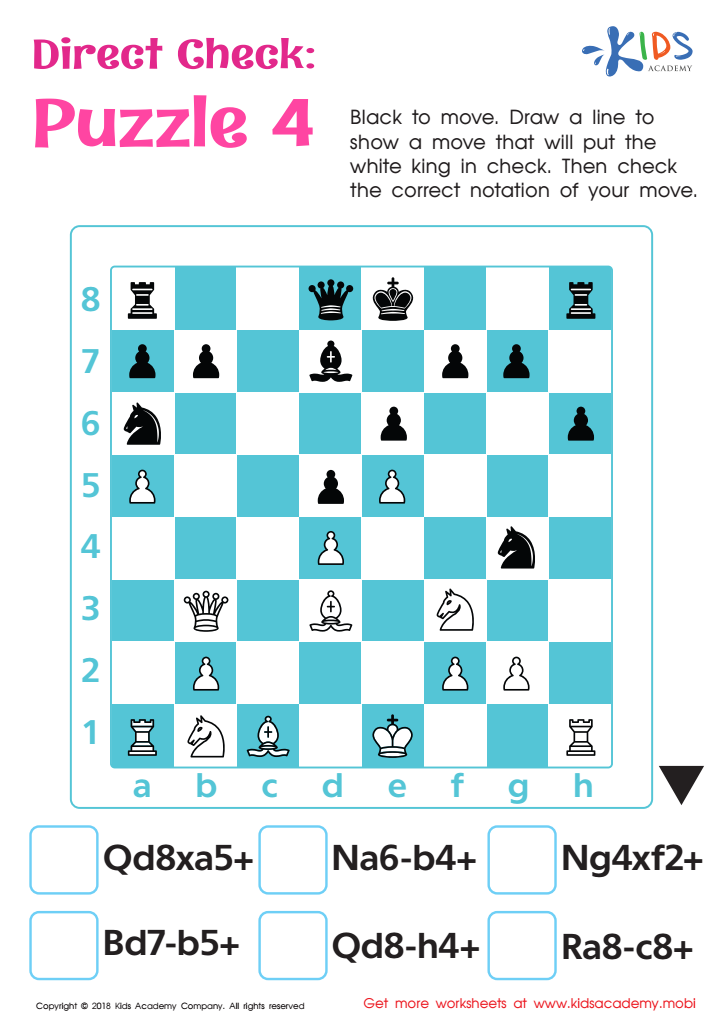

Direct Check: Puzzle 4 Worksheet
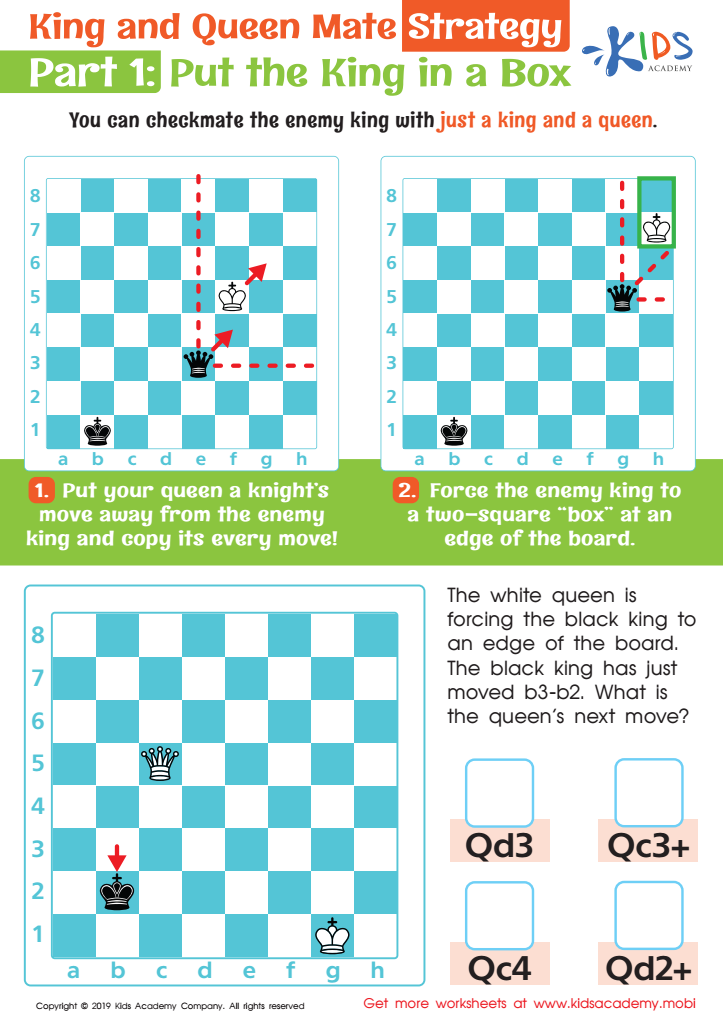

King and Queen Mate Strategy: Part 1 Worksheet
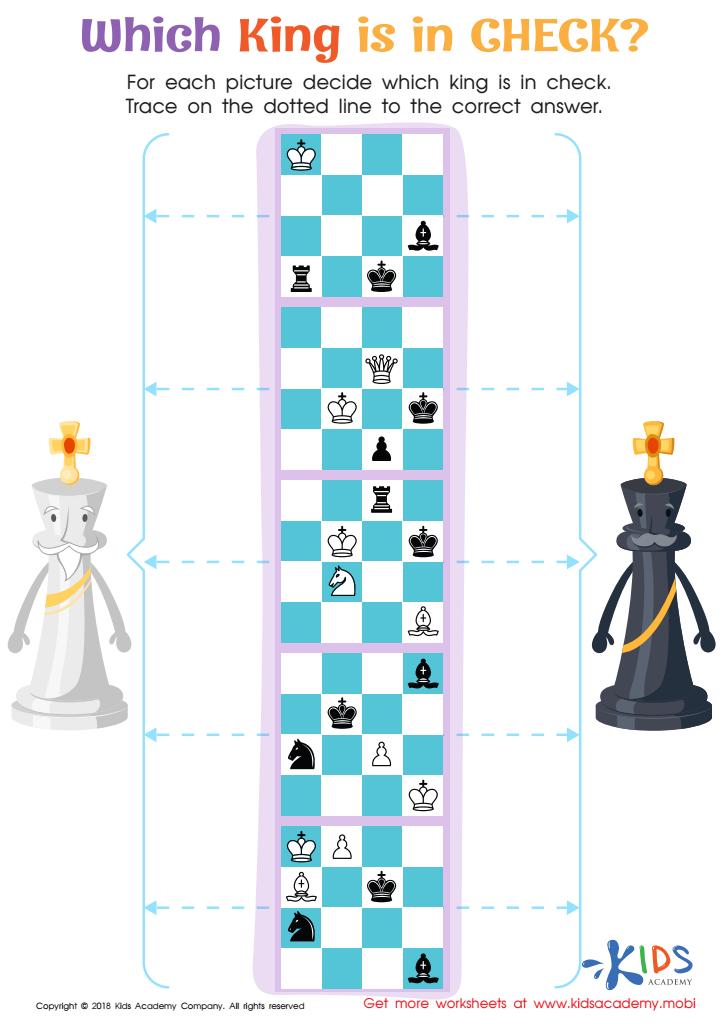

Which King is in Check? Worksheet
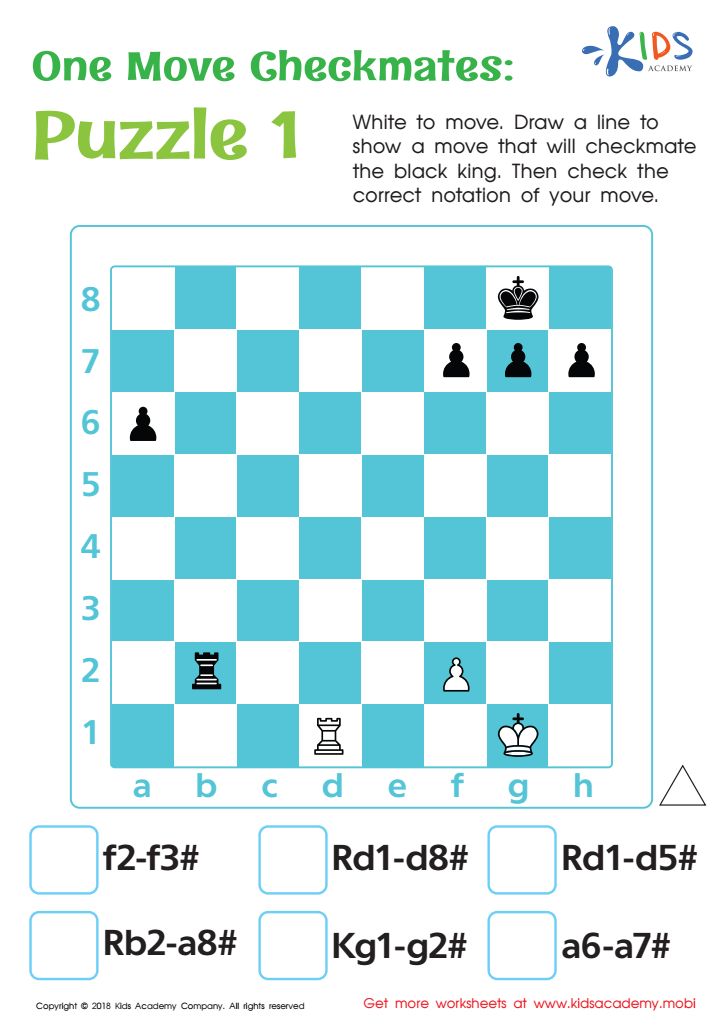

One Move Checkmates: Puzzle 1 Worksheet
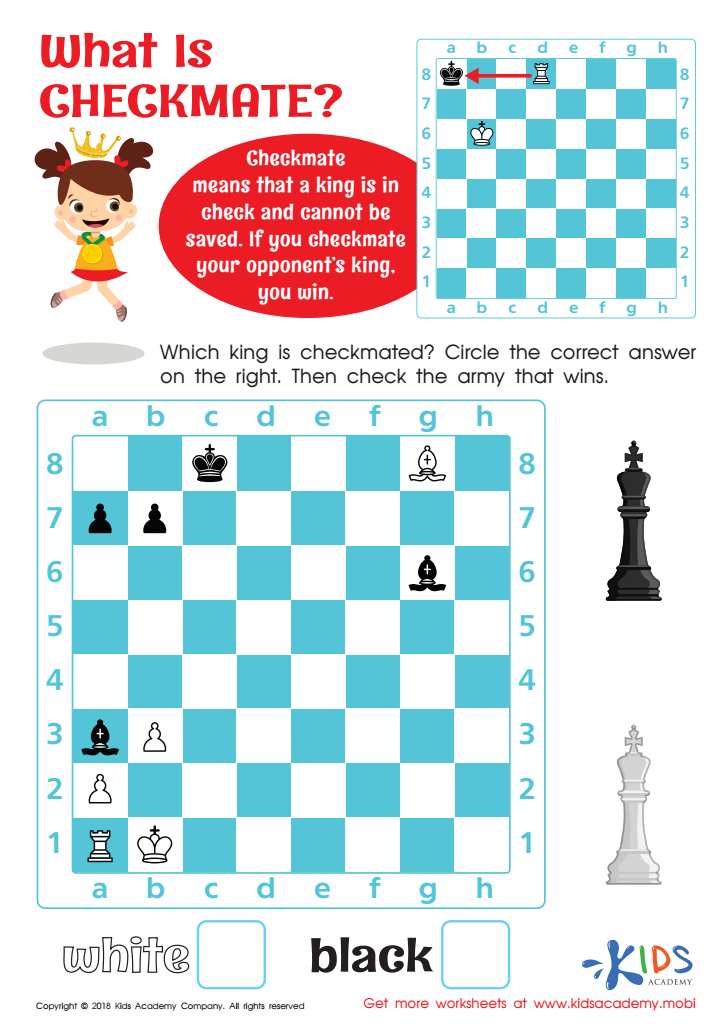

What is Checkmate? Worksheet
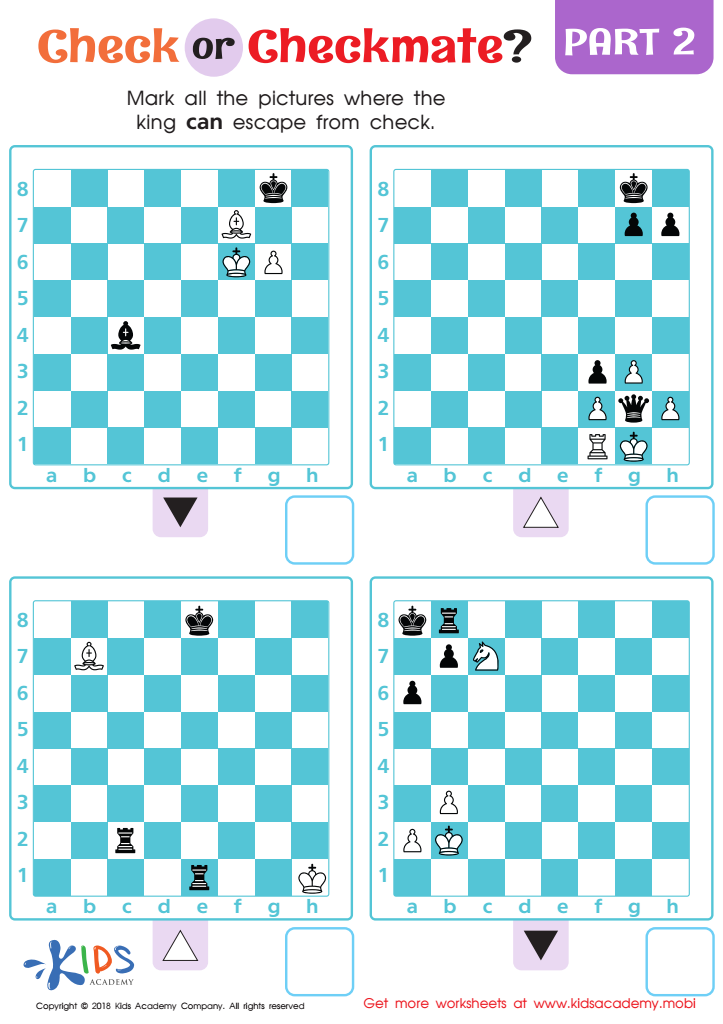

Check or Checkmate: Part 2 Worksheet
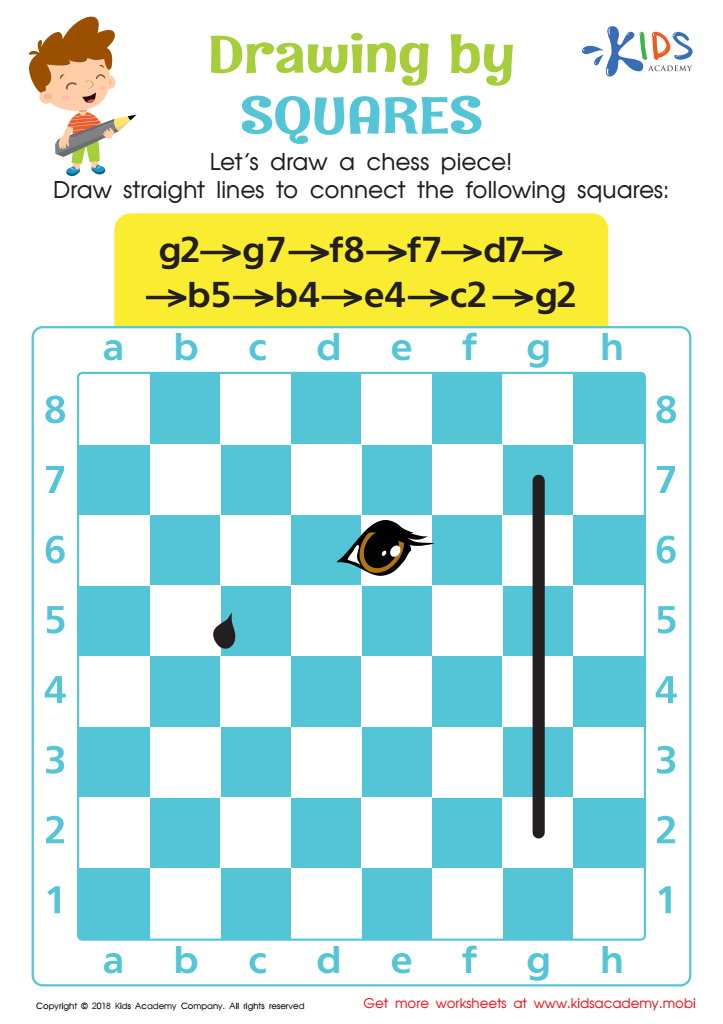

Drawing by Squares Worksheet
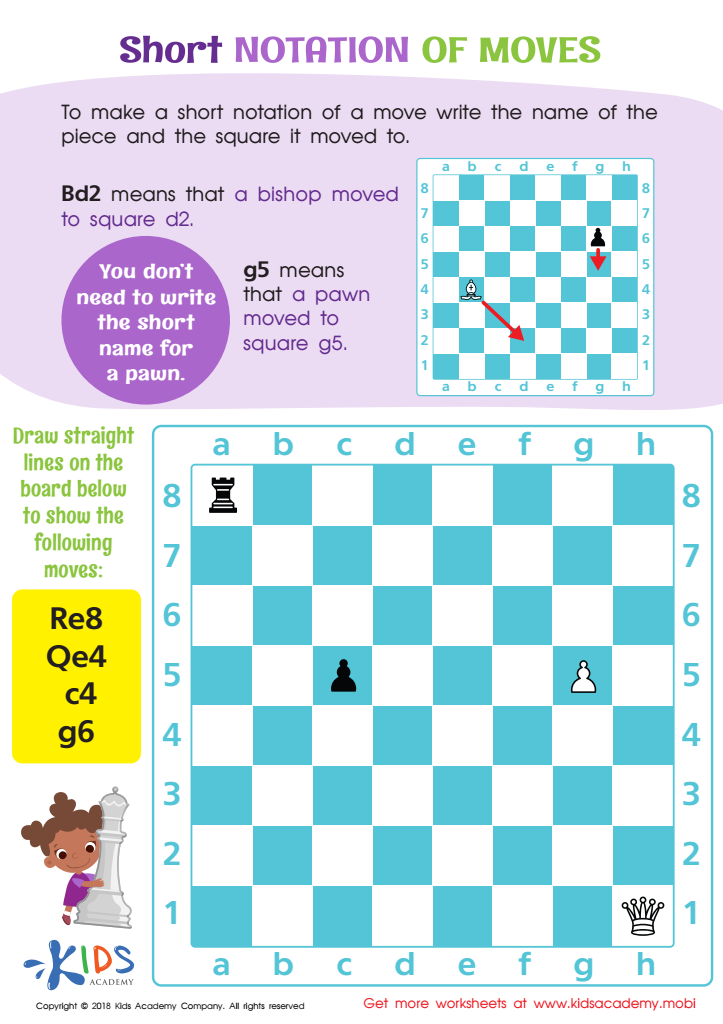

Short Notation of Moves Worksheet
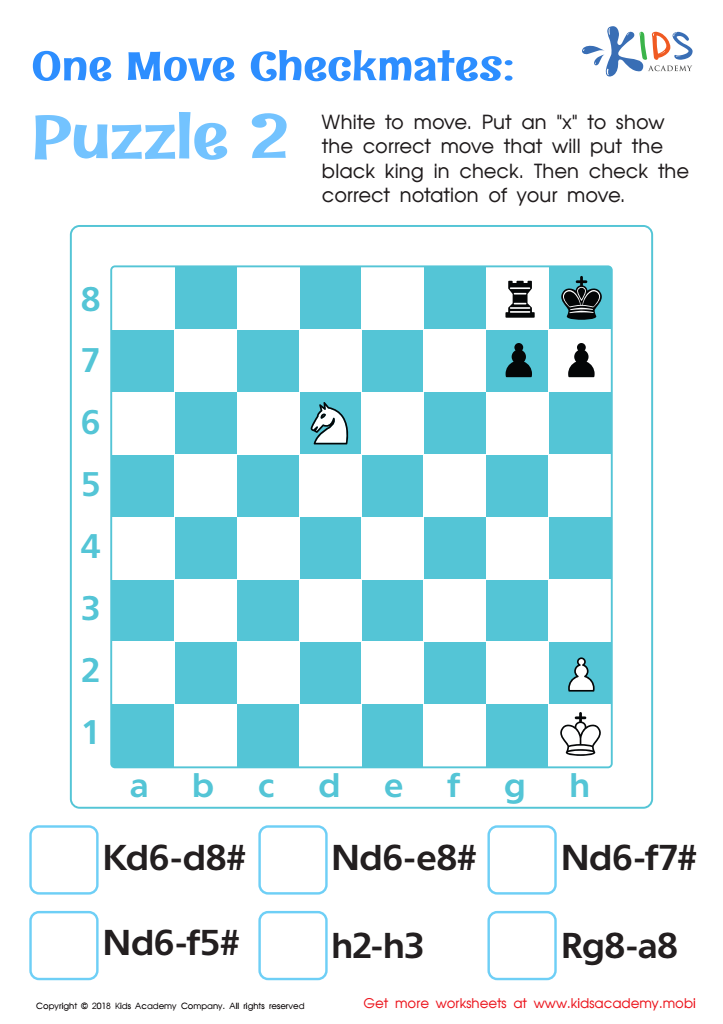

One Move Checkmates: Puzzle 2 Worksheet
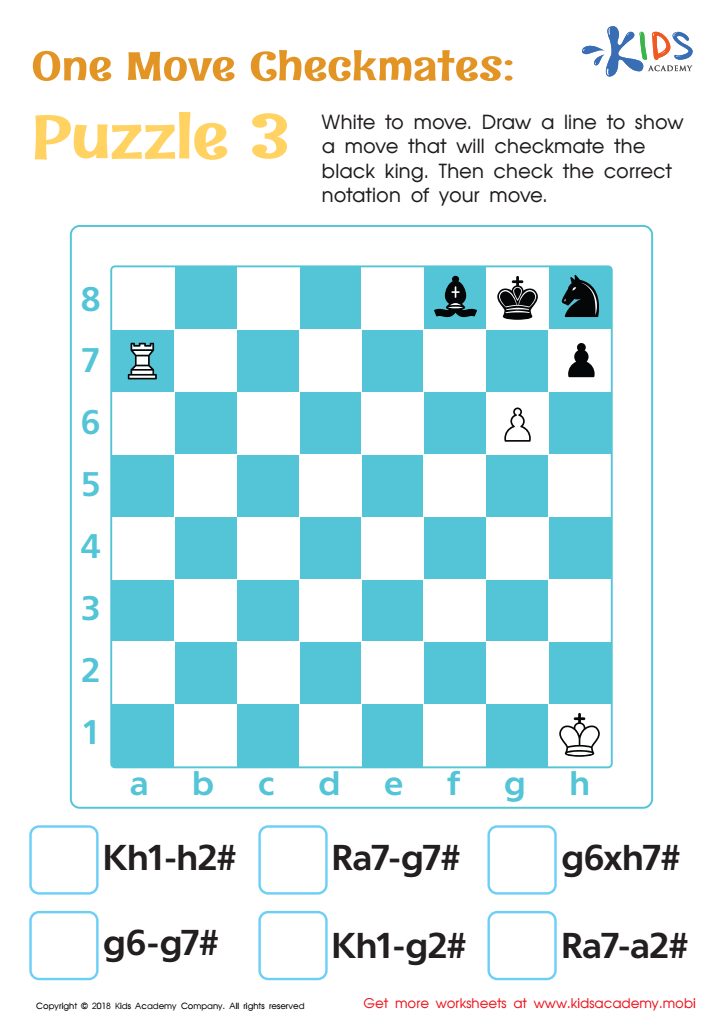

One Move Checkmates: Puzzle 3 Worksheet
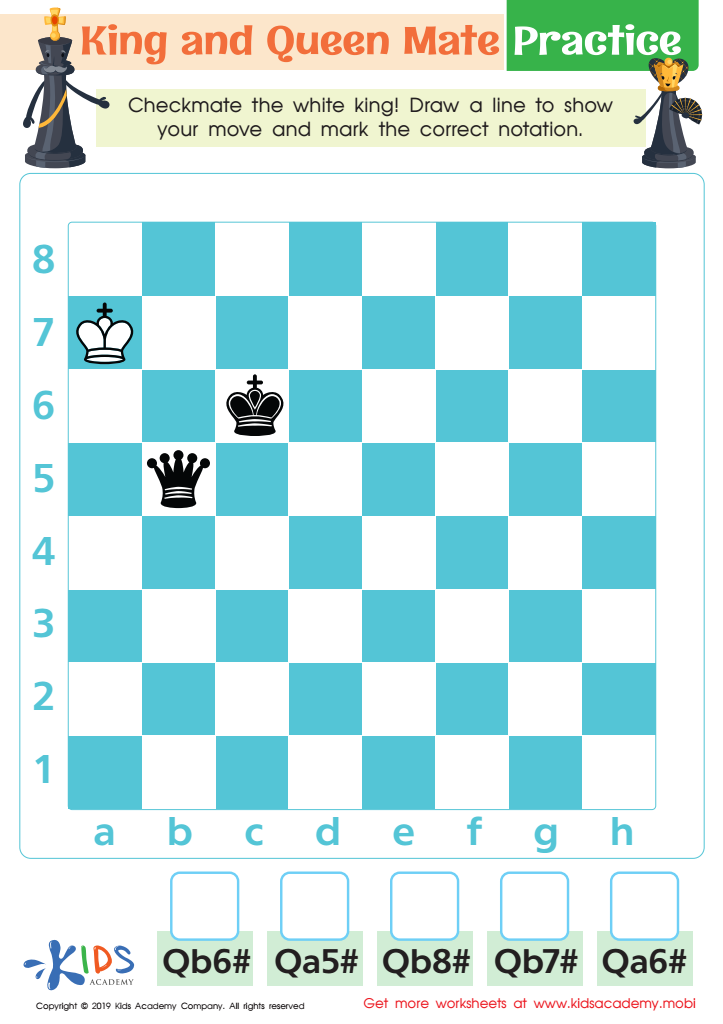

King and Queen Mate Practice Worksheet
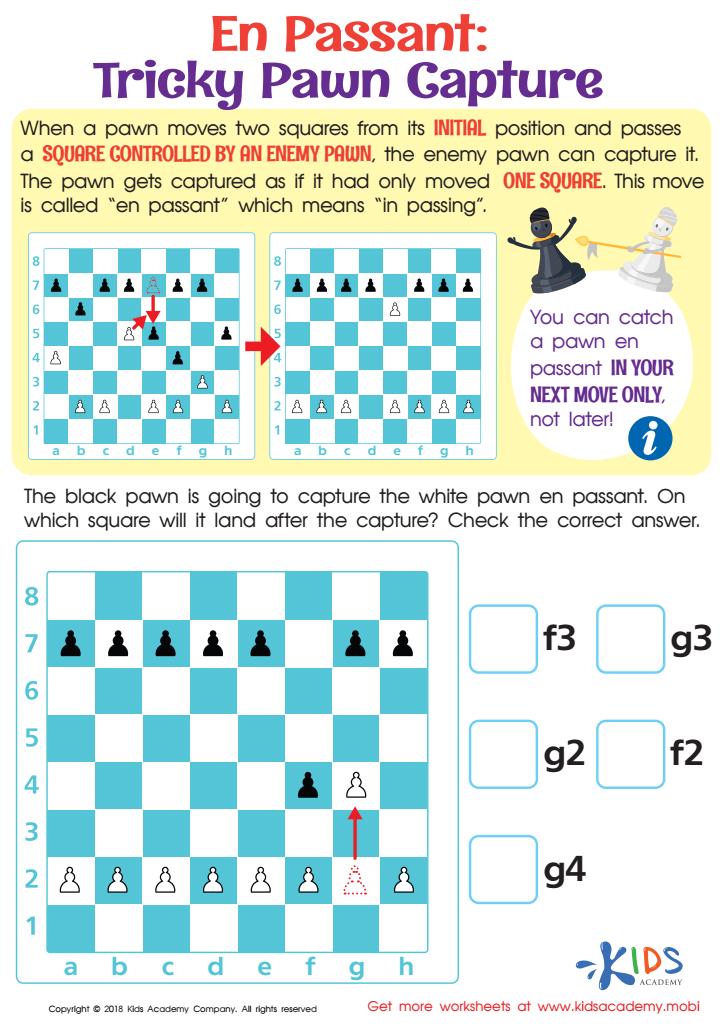

En Passant: Tricky Pawn Capture Worksheet


Two Rook Mate Strategy Worksheet


En Passant: Writing it Down Worksheet
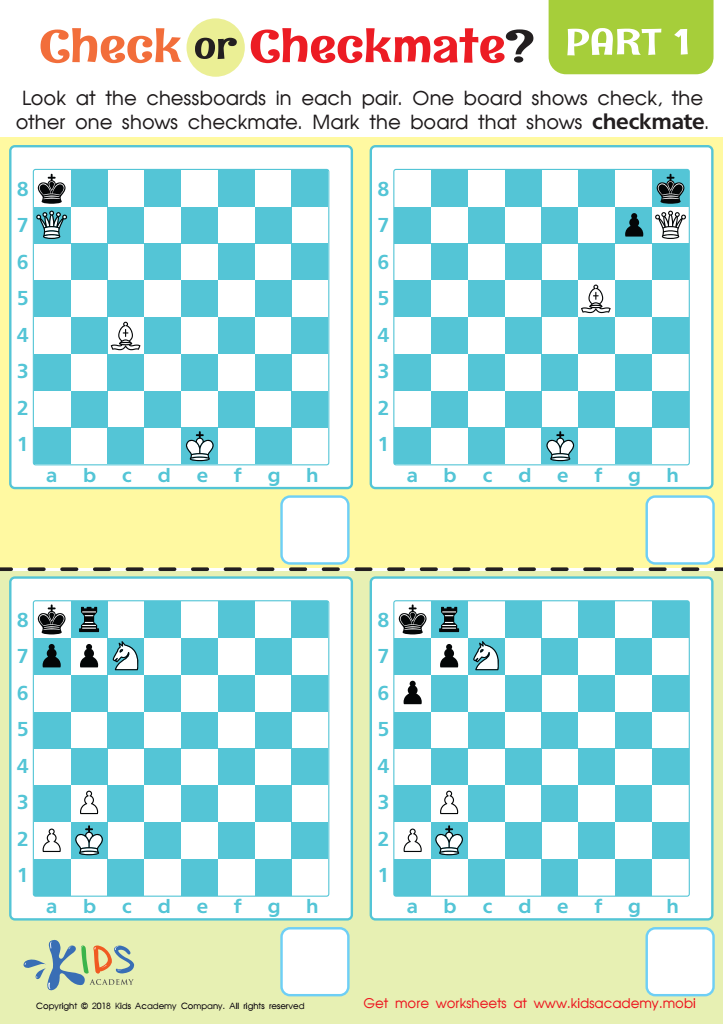

Check or Checkmate: Part 1 Worksheet
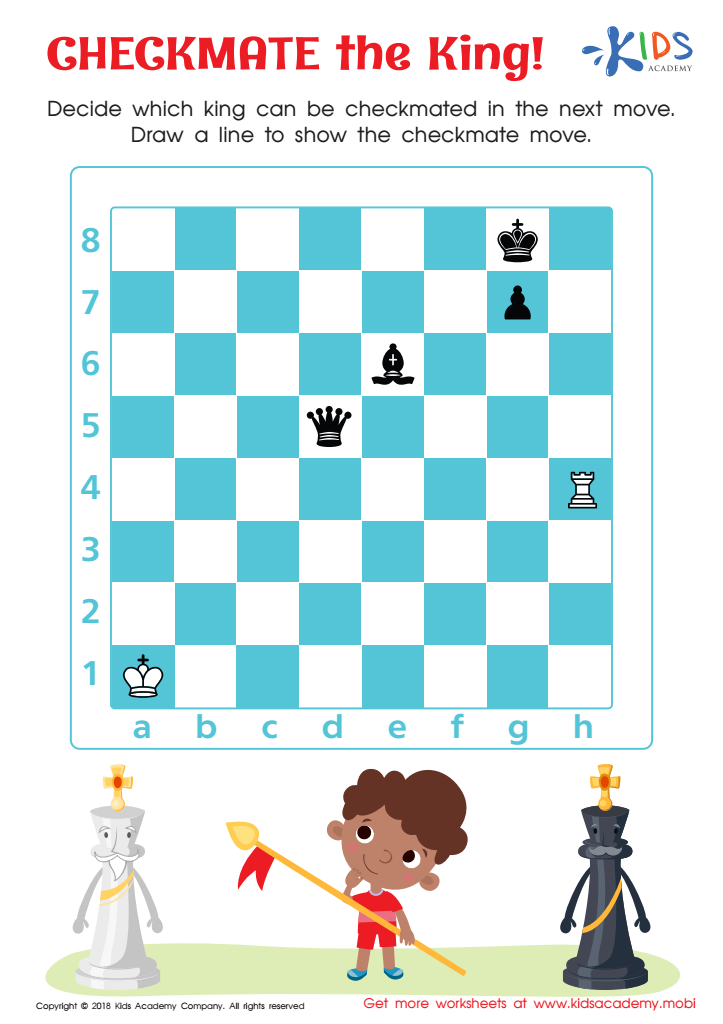

Checkmate the King Worksheet
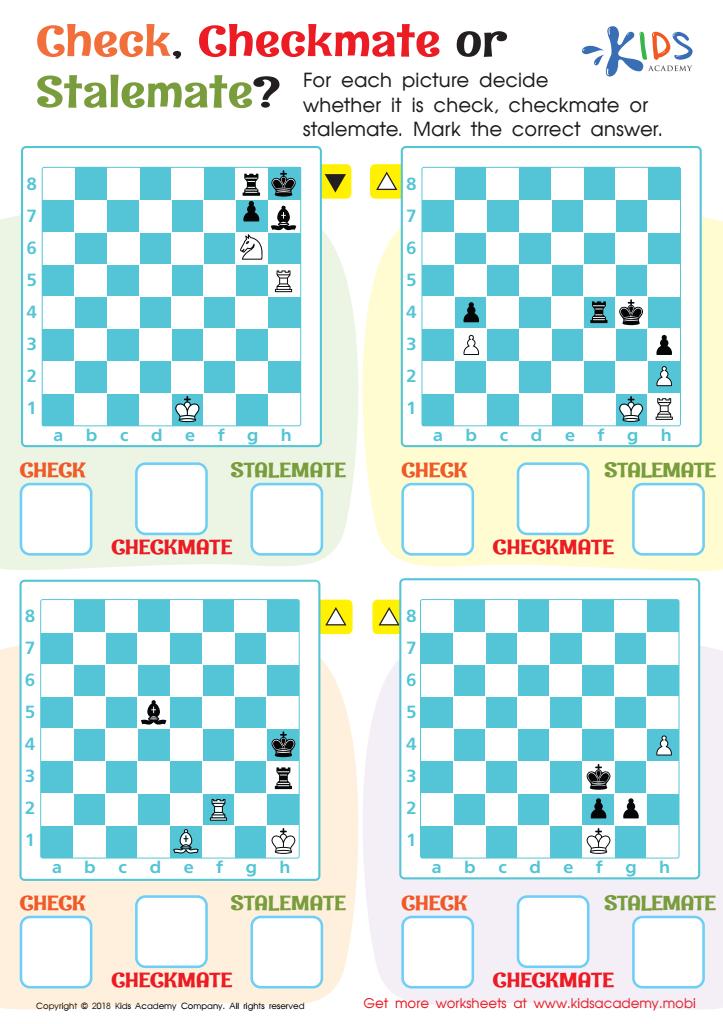

Check. Checkmate or Stalemate? Worksheet
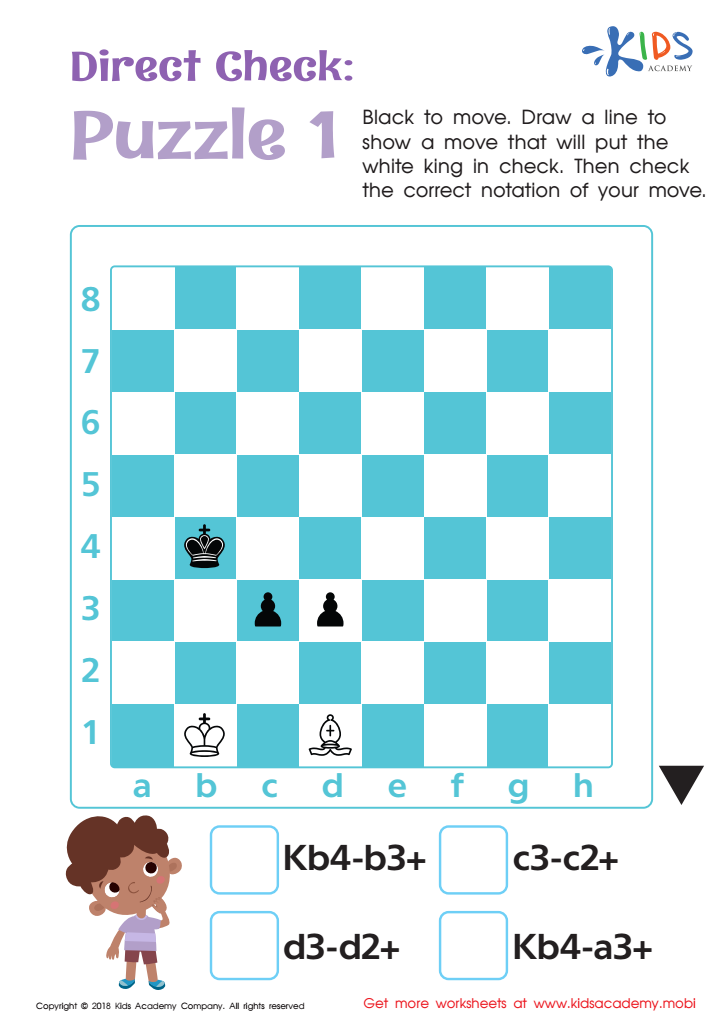

Direct Check: Puzzle 1 Worksheet
Extra Challenge Chess for ages 3-7 offers significant developmental benefits that parents and teachers should prioritize. Chess teaches critical thinking, problem-solving, and strategic planning skills at an early age, fostering cognitive growth. By introducing this game to young learners, we encourage patience and focus, as children learn to contemplate their moves and anticipate their opponent's strategy. The game's rules promote rule-following, discipline, and perseverance, which are essential traits for academic and personal success.
Additionally, chess nurtures social skills such as sportsmanship and effective communication. Playing with peers enhances collaboration, teaching children the importance of teamwork and respect for others. The game also boosts memory and concentration, as players must remember moves and sequences, enhancing cognitive recall.
Finally, participating in chess can improve self-esteem and confidence as children experience success in their games. The structured framework of chess offers a safe environment for young players to learn from both victories and defeats. Ultimately, incorporating Extra Challenge Chess in early education stimulates intellectual curiosity and lays a firm foundation for future learning, making it an invaluable tool for parents and teachers invested in holistic childhood development.
 Assign to My Students
Assign to My Students





